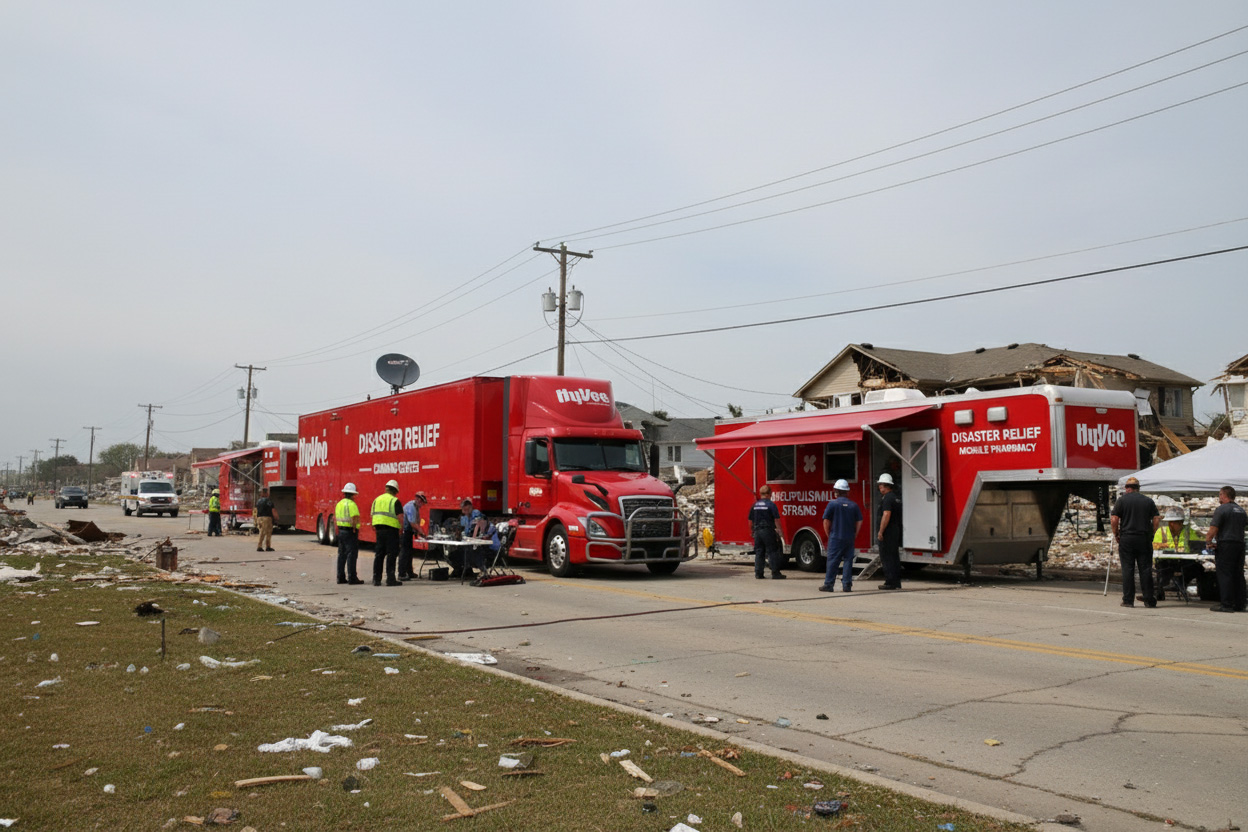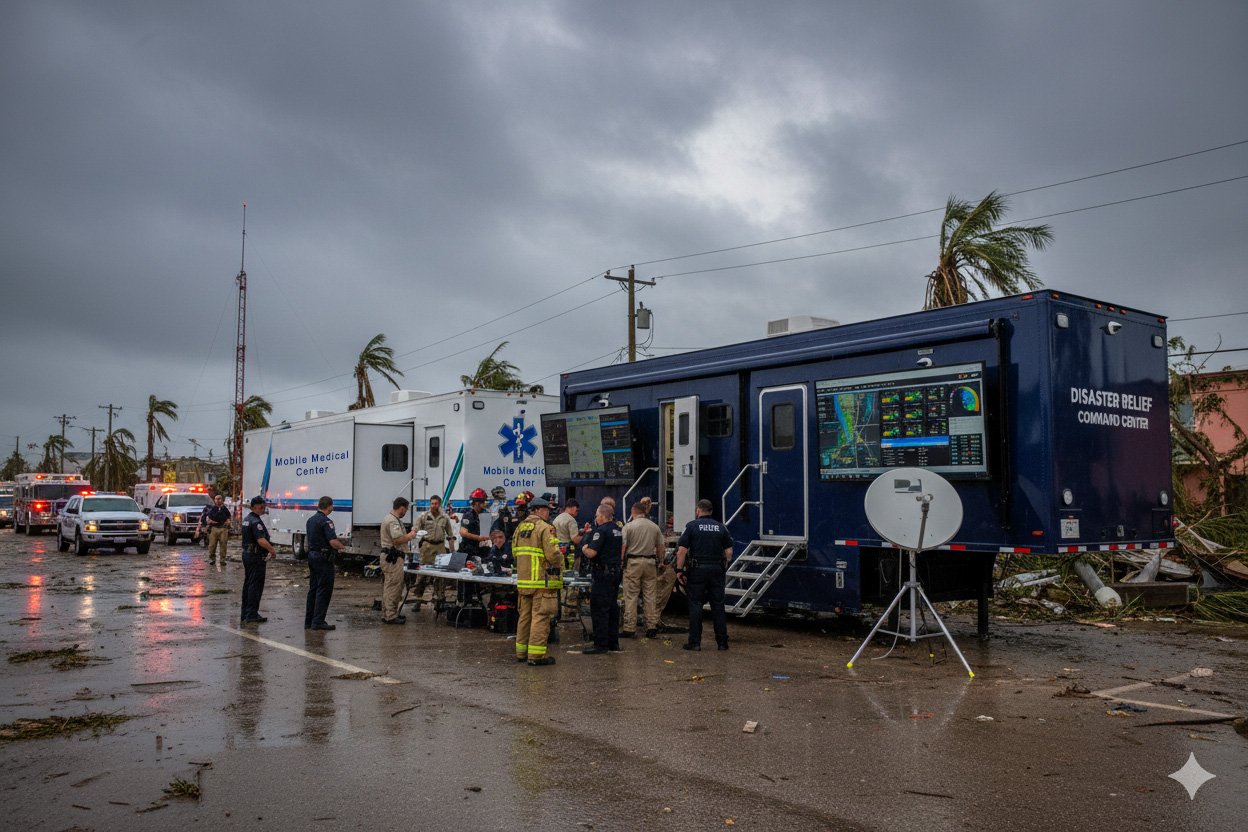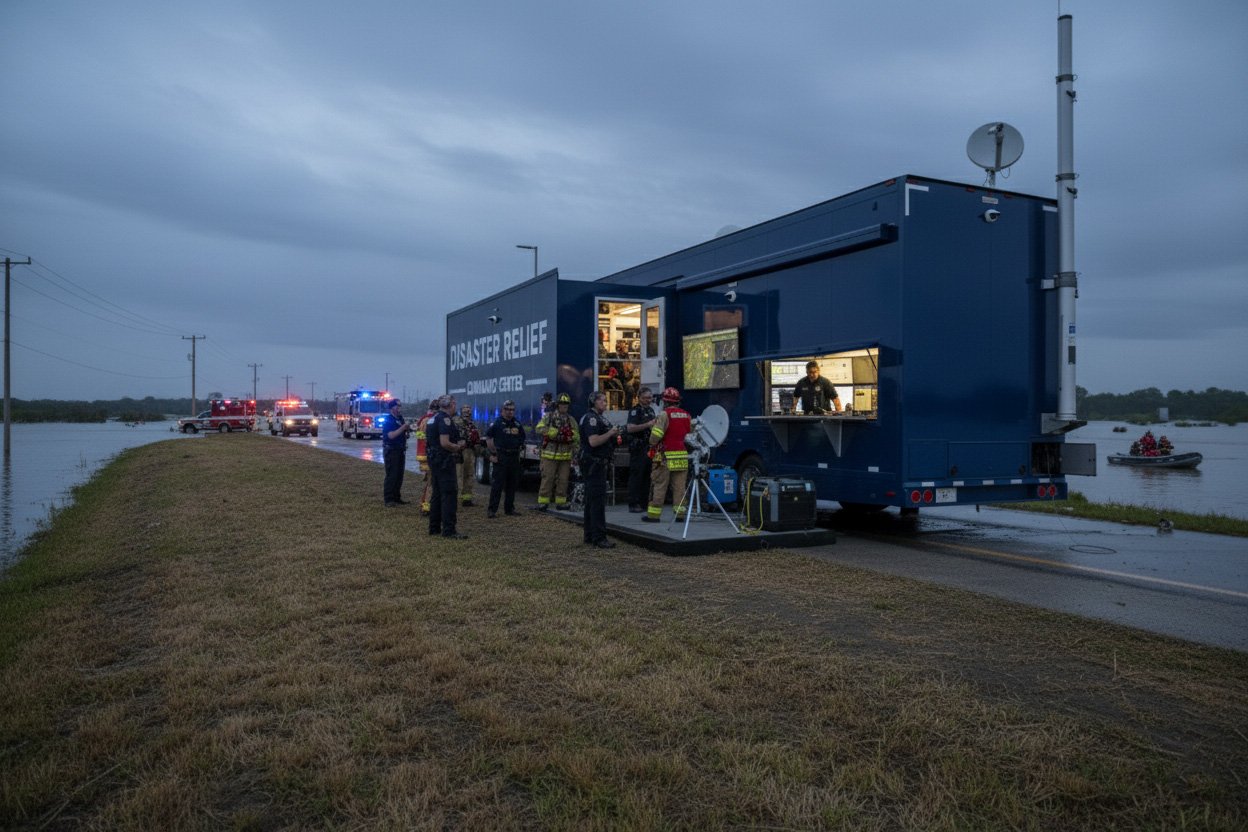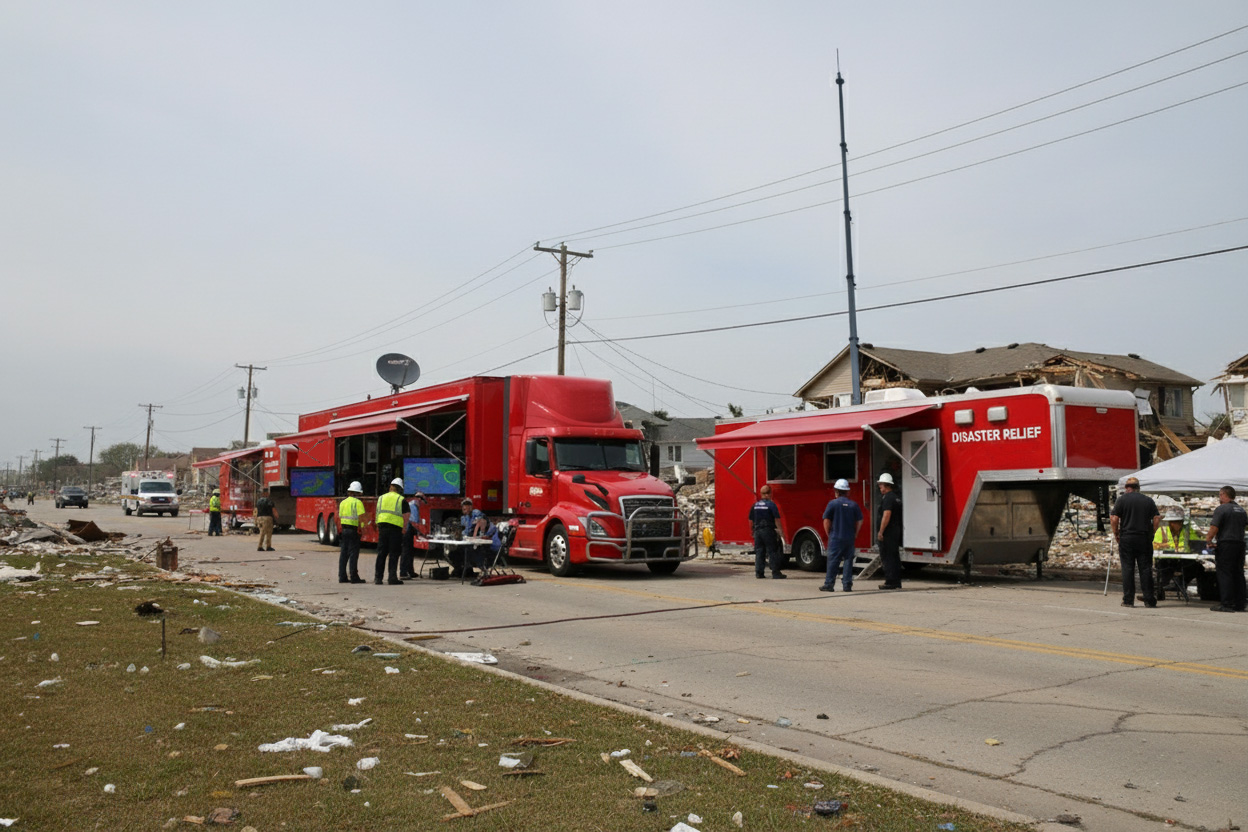How Mobile Medical and Command Units Work Together in Disaster Relief
When disaster strikes, speed and coordination can mean the difference between life and death. Responding to hurricanes, floods, or earthquakes...
7 min read
Craftsmen Industries Nov 3, 2025 1:14:57 AM

Disaster response vehicles are pivotal in modern emergency management, serving as the backbone for coordination among various agencies during crises. Equipped with specialized tools and technologies, these vehicles enable agencies to operate efficiently in environments where infrastructure may be compromised.
According to the Federal Emergency Management Agency (FEMA), strong coordination among multiple response organizations is crucial for reducing casualties and restoring stability during disasters. Effective collaboration ensures that resources are efficiently deployed and that response efforts are well-organized to meet urgent needs across affected areas.
This comprehensive guide explores how disaster response vehicles enhance multi-agency coordination by strengthening communication, logistics, command structures, medical support, and technology integration. We will also examine case studies, federal guidelines, and future innovations that shape their role in building resilient disaster management systems.
Disaster response vehicles are integral to the operational success of emergency management agencies. They function as mobile command centers, medical units, and logistical support platforms, enabling agencies to respond swiftly and effectively to disasters.
Together, these specialized functions enable disaster response vehicles to keep operations running smoothly, support field teams, and deliver critical services when every second counts.
They serve as centralized hubs for decision-making, equipped with communication, mapping, and monitoring systems that allow leaders to coordinate multiple agencies from the field.
Medical units handle patient care and stabilization, while logistical vehicles supply equipment, fuel, and personnel to create a seamless and coordinated response.
Effective communication is the cornerstone of coordinated disaster response. Disaster response vehicles are equipped with advanced communication technologies that enable seamless information sharing among various agencies.
These communication tools help teams share updates instantly, stay aligned, and make better decisions together in fast-changing conditions.
They let fire, police, and medical teams talk to each other on shared frequencies, helping everyone stay connected and reducing confusion.
It helps command teams make quick, informed decisions by tracking resources, personnel, and real-time updates from the field.
The ability to transport resources and personnel swiftly is crucial in disaster response. Disaster response vehicles are designed to navigate challenging terrains and deliver aid where it's needed most.
These vehicles allow aid to flow smoothly and quickly to people in need, even when roads or infrastructure are damaged.
All-terrain and modular vehicles are great choices because they can move through rough areas and be adapted for different purposes, such as transport or storage.
When transportation, storage, and delivery are well-coordinated, supplies reach communities faster and relief efforts stay on track.

Mobile command operations are essential for effective disaster management. Disaster response vehicles equipped with advanced technologies enable incident commanders to oversee operations and make informed decisions.
Geospatial Information Systems (GIS): Geographic Information System (GIS) tools enable commanders to visualize disaster zones, assess damage, and develop effective response strategies. These systems, integrated into mobile command vehicles, provide real-time situational awareness, enhancing decision-making and resource deployment during emergencies.
With these tools in place, mobile command vehicles help leaders manage operations confidently and keep teams organized throughout the response.
GIS systems show maps, damage zones, and live field data, helping commanders make faster and more accurate decisions.

In disaster scenarios, providing medical care is paramount. Disaster response vehicles equipped with medical facilities ensure that immediate healthcare services are available to those in need.
Mobile Medical Units: These mobile medical units, operated by organizations like the National Disaster Medical System, provide crucial triage, stabilization, and treatment in disaster-stricken areas. They ensure continuity of healthcare services when local hospitals are overwhelmed or inaccessible
Through these medical capabilities, disaster response vehicles contribute significantly to the healthcare response during disasters, saving lives and alleviating suffering.
They usually carry emergency medicines, first-aid kits, surgical tools, and diagnostic equipment for quick medical response.
The integration of advanced technologies into disaster response vehicles enhances their effectiveness and efficiency in managing emergencies.
These technologies make disaster response vehicles smarter, faster, and more connected, improving teamwork and response times.
Disaster response vehicles operate within established national frameworks that define roles, responsibilities, and coordination mechanisms during emergencies.
By aligning with these frameworks, disaster response vehicles contribute to a unified and efficient national disaster response.
FEMA uses mobile units for communication, logistics, and medical response to strengthen coordination between federal, state, and local teams.
The future of disaster response vehicles lies in innovation and adaptability. Emerging technologies and design approaches are shaping the next generation of response vehicles.
Electric and Hybrid Powertrains: The adoption of electric and hybrid technologies in disaster response vehicles reduces reliance on fossil fuels and minimizes environmental impact. The U.S. Department of Energy supports electric vehicle technologies for emergency responders through project assistance, technical support, and funding.
With a growing number of electric and hybrid emergency vehicles, the DOE provides free and for-fee training resources to help first responders and second responders safely manage incidents involving EVs.
These innovations are shaping a new generation of disaster response vehicles that are more sustainable, adaptable, and mission-ready.
Disaster response vehicles are not just transport assets but the backbone of modern disaster management. From communication and logistics to medical response and command authority, these vehicles empower agencies to collaborate seamlessly even under extreme conditions. Supported by federal frameworks and technological innovation, their role is only expected to expand in the coming years.
For agencies, organizations, and governments seeking vehicles that meet the highest standards of reliability, precision, and customization, Craftsmen Industries delivers luxury-engineered disaster response units trusted nationwide. Explore how their custom solutions can prepare your team for resilience and success in critical missions.
They connect agencies through communication, logistics, and command functions, ensuring all responders operate in sync despite infrastructure damage.
Fire departments, law enforcement, FEMA, medical teams, and humanitarian groups all rely on disaster response vehicles for mobility and coordination.
Yes. Mobile command centers are specialized vehicles equipped with IT, GIS, and communication tools designed for leadership and coordination.
Medical response vehicles act as mobile clinics and triage centers, extending healthcare to areas where hospitals are damaged or inaccessible.
AI, drones, modular vehicle designs, and electric power systems will make disaster response fleets smarter, sustainable, and more adaptive.

When disaster strikes, speed and coordination can mean the difference between life and death. Responding to hurricanes, floods, or earthquakes...

When natural disasters strike, chaos and disruption follow. Traditional communication networks collapse, mobility becomes restricted, and...

In today’s rapidly evolving threat environment, where natural disasters strike, urban incidents escalate, and critical infrastructure faces growing...